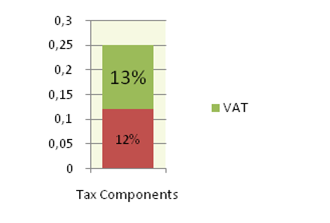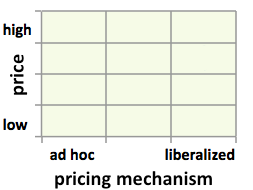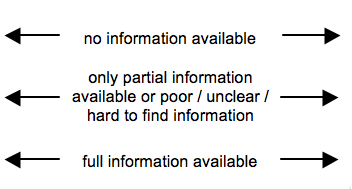Knowledge fuels change - Support energypedia!
For over 10 years, energypedia has been connecting energy experts around the world — helping them share knowledge, learn from each other, and accelerate the global energy transition.
Today, we ask for your support to keep this platform free and accessible to all.
Even a small contribution makes a big difference! If just 10–20% of our 60,000+ monthly visitors donated the equivalent of a cup of coffee — €5 — Energypedia would be fully funded for a whole year.
Is the knowledge you’ve gained through Energypedia this year worth €5 or more?
Your donation keeps the platform running, helps us create new knowledge products, and contributes directly to achieving SDG 7.
Thank you for your support, your donation, big or small, truly matters!
Difference between revisions of "Fuel Prices Bolivia"
***** (***** | *****) |
***** (***** | *****) |
||
| Line 7: | Line 7: | ||
*Low revenue for oil producers (27 USD per barrel) leads to underinvestment | *Low revenue for oil producers (27 USD per barrel) leads to underinvestment | ||
| − | + | "Fuel prices are uniform, controlled by government, and frozen for years at a time. Since Jan 2009, vehicles with foreign licence plates have been charged international prices, set every quarter. On the domestic market, the price of oil is US$27/bbl; concerned about declining oil production, government issued Supreme Decree 1202 in Mar 2012, providing a tax credit of US$30/bbl to foreign companies in addition to US$10 in cash they were receiving. As late as Dec 24, 2010, government was reportedly denying any intention to reform subsidies. However, just two days later, government as part of a broader subsidy reform increased diesel price by 83% and gasoline by 73%, the largest since 1991 when prices went up 35%. The increases were completely reversed 5 days later due to widespread protests, as was food subsidy reduction. In Feb 2011, government created a new ministry of communications, 8 years after such a ministry had been abolished. Fuel subsidies have amounted to about 3% of GDP in recent years." | |
| − | + | (Source: Kojima, Masami. (2013, forthcoming). “Petroleum product pricing and complementary policies:Experience of 65 developing countries since 2009.” Washington DC: World Bank.) | |
| − | |||
| − | |||
| − | |||
| − | |||
|Fuel Currency=BOB | |Fuel Currency=BOB | ||
|Fuel Price Exchange Rate=6.88 | |Fuel Price Exchange Rate=6.88 | ||
Revision as of 10:37, 18 February 2013
Part of: GIZ International Fuel Price database
Fuel Pricing Policies
| Local Currency: | BOB |
| Exchange Rate: | 6.88
|
| Last Update: |
- Bolivia is net-importer of fossil fuels from Venezuela and Argentina
- Fuels are sold subsidized
- Prices are heavily regulated
- Price gaps to neighbouring countries enforces smuggling
- Low revenue for oil producers (27 USD per barrel) leads to underinvestment
"Fuel prices are uniform, controlled by government, and frozen for years at a time. Since Jan 2009, vehicles with foreign licence plates have been charged international prices, set every quarter. On the domestic market, the price of oil is US$27/bbl; concerned about declining oil production, government issued Supreme Decree 1202 in Mar 2012, providing a tax credit of US$30/bbl to foreign companies in addition to US$10 in cash they were receiving. As late as Dec 24, 2010, government was reportedly denying any intention to reform subsidies. However, just two days later, government as part of a broader subsidy reform increased diesel price by 83% and gasoline by 73%, the largest since 1991 when prices went up 35%. The increases were completely reversed 5 days later due to widespread protests, as was food subsidy reduction. In Feb 2011, government created a new ministry of communications, 8 years after such a ministry had been abolished. Fuel subsidies have amounted to about 3% of GDP in recent years."
(Source: Kojima, Masami. (2013, forthcoming). “Petroleum product pricing and complementary policies:Experience of 65 developing countries since 2009.” Washington DC: World Bank.)
Fuel Prices and Trends
| Gasoline 95 Octane | Diesel | |
|---|---|---|
| in USD* |
|
|
| in Local Currency |
|
|
* benchmark lines: green=US price; grey=price in Spain; red=price of Crude Oil
Fuel Price Composition
Price composition as of 2002/12/01.


Source: example to estimate %-values for each component
http://uneprisoe.org/Pricing/FuelPricingPolicies.pdf pages 15-18
http://www.tmf-vat.com/international-vat-rates-2010/94-bolivia-vat-rate.html
At a Glance
| Regulation-Price-Matrix |
| ||||
 |

|

|

| ||
Sources to the Public
| Type of Information | Web-Link / Source |
|---|---|
| Other Information | http://www.bcb.gov.bo/ (Central Bank of Bolivia) |
| Other Information | http://www.cbli.org.bo (Bolivian Chamber of Hydrocarbons) |
| Other Information | http://www.bolivia-industry.com (National Chamber of Industry) |
| Pump prices and margins | http://www.hidrocarburos.gob.bo/MHE2012/ |
Contact
Please find more information on GIZ International Fuel Price Database and http://www.giz.de/fuelprices
The following coordinate was not recognized: {{#geocode: Bolivia|google }}.



















